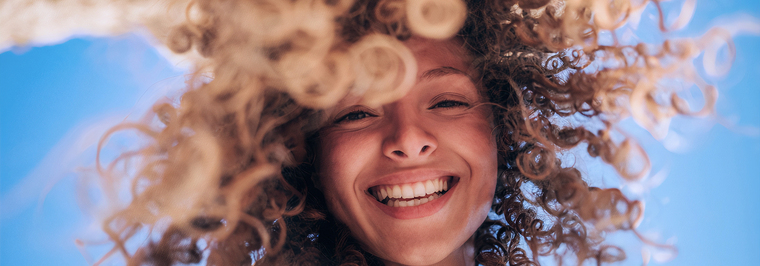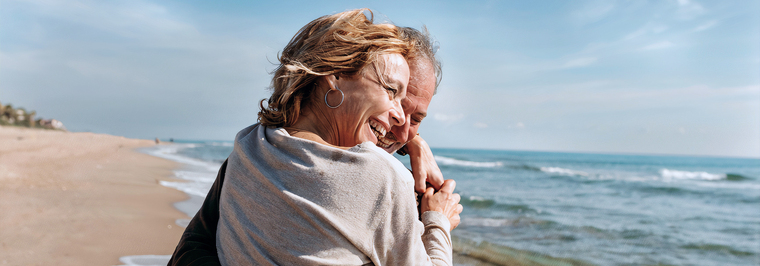A beautiful smile attracts, disposes to communication and makes the face more expressive, more attractive and younger. Modern achievements in aesthetic dentistry allow anyone to enjoy a perfect smile: you need just go to the clinic and get veneers on your teeth.
Veneers are called onlays on the outer surfaces of the teeth, reliably hiding any aesthetic defects. They are made in different ways, using different technologies, and we will tell you more about ceramic veneers in our new article.
Ceramic veneers: definition, description, photos

The basis for the onlay production is dental ceramics, a material with unique properties. It is resistant to mechanical stress and has chemical inertness as well as transparency indicators that are characteristic for natural tooth enamel.
The palette of ceramics is extensive and represented by a large number of shades. The material is biocompatible with the tissues of the human body, and does not cause irritation of sensitive tissues of the oral cavity and allergic reactions.
All these qualities make it possible to produce ceramic veneers with impeccable aesthetics, which are reliable, safe and comfortable to use.
Ceramic onlays are called indirect, as they are made by using teeth impressions in a dental laboratory. This production technology allows to obtain constructions of high anatomical accuracy, with a high-quality fit to the natural tissues of the tooth. The tightness of the fit is very important, and if it is insufficient, bacteria will get under the veneer and provoke caries and inflammation.
The flawless and admirable smiles of Hollywood stars are created using ceramic veneers. If you dream of a smile as bright and dazzling as the one of the idols of millions, contact our premium dentistry clinic AESTHETE. We install ceramic veneers in Dubai, helping our patients become beautiful and successful! To get consultation on the service, please schedule an appointment with our specialists at the Dubai clinic.
Ceramic veneers for a dazzling smile
Ultra-thin ceramic veneers can be called a means of cardinal, magical transformation, because they can work real miracles.
When you get veneers installed:
- Your tooth enamel will acquire a beautiful color and an elegant pleasant gloss. The shade of ceramic veneers can be different: from the most natural to ultrawhite, and all depends on your wishes of how your new smile should look like! Onlays will reliably hide stains, cracks, chips and other defects in your natural enamel;
- Your smile will become flawless in every way. Ceramic veneers help mask insufficient size and geometrically irregular shape of teeth, as well as interdental spaces;
- Your face will look younger. With age, the teeth wear out, the bite becomes lower and these changes provoke a decrease in the lower third of the face. The lower jaw rises, the distance between the chin and the tip of the nose is reduced, and therefore, deep wrinkles and nasolabial folds begin to appear near the lips and eyes, as well as the beautiful contour of the cheekbones is lost. Ceramic veneers will help restore the bite, and their installation will make your face younger by 5-10 years!
Veneers not only create a beautiful smile, but they also help a person feel self-confident, which is important for psychological comfort and success in personal life and career.
Types of ceramic veneers
Ceramic veneers have their own classification, according to which they are divided into different types by two main features: their material and production technology. The price of ceramic veneers and performance characteristics depend on the same factors, so we will consider their different types in detail.
1. Types of ceramic veneers by material

The material for the onlay production can be as follows: feldspar ceramics, glass ceramics, aluminum oxide. Emax veneers, patented by the German manufacturer Ivoclar-Vivadent, are made from glass ceramics.
Emax ceramic veneers are valued for aesthetics, durability and reliability, but they are machine-made, so they usually have increased thickness and not always accurate color reproduction. These veneers can look unnatural on the teeth.
Good ceramic veneers should be visually indistinguishable from natural teeth, and such onlays for aesthetic restoration are created in the dental laboratory of our clinic.
Our veneers are made by hand; they have a transparent edge, anatomically accurate microrelief and beautiful color gradation inherent in natural enamel. Therefore, the smile looks truly natural, and only a specialist during the examination can find out that these are veneers.
A variety of ceramic veneers is Lumineers produced by Cerinate. Advertising calls the main advantages of lumineers impeccable aesthetics and the option of installation without tooth facing. But in fact, these advantages are somewhat exaggerated. To install lumineers, in most cases, tooth enamel has to be faced, and the aesthetics leaves much to be desired, because the onlays are made by machine and can be too thick or too thin. Due to too thin onlay, all defects that should be masked can be seen through, or otherwise excess thickness gives an unnatural look.
2. Types of ceramic veneers by production technology

There are the following types of products by the production technology:
- For the manufacture of veneers, a plaster model is first created, on which the ceramic mass is applied manually and in layers. Then the product is baked in a special oven. Exposure to high temperatures ensures the strength of the finished structure, and manual application of layers of material of different shades and thicknesses ensures excellent aesthetics;
- A model of the future ceramic veneer is created from wax and, based on it, a mold is made, into which the molten material is poured. When the ceramic mass hardens, it is released from the mold and finished by hand.
Milled ceramic veneers are made using special software, CAD/CAM technology. The onlays are computer-modeled and machined.
Advantages of ceramic veneers
The price of ceramic veneers is higher than the price of their analogues from other materials, but they will give you a dream smile that you will be proud of! Ceramic veneers have unique characteristics as follows:

1. Durability
Due to the high strength of the material, ceramic veneers are resistant to mechanical stress and abrasion, can be installed both on the front and side teeth, and can correct not only aesthetic, but also some functional defects.

2. Versatility
Onlays can be used to solve a variety of problems: correcting the color, shape and size of teeth. With the veneers, you can get the shade of tooth enamel you want: ultrawhite or natural.

3. Aesthetics
Ceramic veneers have the widest range of colors and shades, as well as varying degree of transparency. These properties of the material allow creating magnificent smiles that amaze others with beauty and charm!

4. Comfort
Ceramic veneers do not feel like a foreign body in the oral cavity, do not cause discomfort when eating, and do not cause smudging. There is practically no period of adaptation to them. There is also no need to make any dietary restrictions. The only thing you have to give up is the habit of cracking nuts and opening bottles with your teeth.

5. Easy care
Caring for ceramic veneers is no different from caring for your regular teeth. The onlays are cleaned with a soft brush and a non-abrasive tooth paste; a standard set of tools is used for hygiene. Preventive professional cleaning is recommended twice a year to help maintain healthy teeth and a beautiful smile. Ceramic veneers do not darken with time, do not absorb pigments from nicotine and food products, and retain a pleasant shine.
Ceramic veneers do not have a lifespan. If you follow the doctor's recommendations and the rules of hygiene, the onlays will serve you all your life, without losing either an attractive look or their functionality.
Possible contraindications

There is a minimum of contraindications to the installation of ceramic veneers, and most of them are relative. For example, if the diagnosis shows serious malocclusion, then orthodontic treatment should be performed and, upon its completion, the veneers can be installed. Ceramic onlays are also the final step in the restoration of a smile aesthetics after the caries or pulpitis treatment.
Absolute contraindications to ceramic veneers are advanced periodontitis, which led to loosening of the teeth, and caries, which led to the destruction of tooth tissues by more than 50%. With such damage, the aesthetics and functionality of the dental unit are restored with inlays or crowns.
Contraindications are identified at the initial consultation of a therapist and an orthopedist; doctors will definitely tell you whether it is possible to put ceramic veneers on your teeth and what needs to be done before the installation.
What to choose: ceramic or composite veneers?
Composite or direct veneers are attractive due to their low price and fast installation. Onlays are created directly in the patient's oral cavity, by layer-by-layer application of the composite on the dental surfaces. However, the speed and reasonable price of restoration are the only advantages of composite veneers. They have much more disadvantages.
Composite veneers have poor aesthetics; they look unnatural, causing unpleasant associations with artificial teeth. The composite does not allow creating a proper transition between tones and shades, as well as the brilliance inherent in natural tooth enamel. Direct veneers are short-lived. They stain from dyes contained in drinks and foods, turn yellow from nicotine, and can chip or crack.
Due to these shortcomings, the savings on installing composite veneers are questionable. They will have to be replaced in 3-4 years, if not earlier, and the final aesthetics is likely not pleasing, but upsetting immediately after installation. Therefore, if you want to get a smile that will delight you and others, it makes sense to schedule the installation of ceramic veneers from the very beginning.
Stages of ceramic veneers installation
Your new smile with ceramic veneers is created in several stages as follows:

1. Initial consultation
The patient comes to the clinic, and is consulted by several specialists at once: a therapist, an orthodontist, and an orthopedist. Contraindications are identified; a macro-lens photo session is carried out. Photos will help to analyze the patient's smile at the current time and find out how the patient would like to improve it.

2. Preparation
If caries, pulpitis, inflammatory processes or insufficient oral hygiene are detected during the examination, all these defects are eliminated before the installation of veneers. After professional cleaning, the onlay color is selected using a special scale, and the tooth impressions are taken, which will be the basis for the manufacture of wax models.

3. Modeling
The patient can try on wax veneers made from the impressions and see how his smile and appearance changes. The option of a preliminary assessment is a great motivation not to put off the transformation of your smile for later!

4. Ceramic veneers manufacture
Ceramic veneers are made according to wax models in the laboratory. The manufacturing process takes about 14 days. When the onlays are ready, the patient is invited to the clinic for installation.

5. Fixation
Ceramic veneers are firmly fixed on the teeth with a special dental cement. After fixation, the veneer and tooth become one, and the patient gets a new irresistible smile!
Magicneers ceramic veneers

Our clinic offers its patients the most advanced achievements in dentistry for any of the services provided. Veneers are our key specialization, in which we achieved perfection: our clinic's chief physician Artavazd Manukyan has developed the Magicneers proprietary technology for installing veneers without tooth facing.
The technology has obtained the patent confirming its uniqueness. Magicneers veneers are installed in the only clinic in Dubai - our AESTHETE dentistry. Our ceramic veneers without tooth facing allow creating perfect smiles without harming dental health!
Tooth facing is an unpleasant, painful procedure that makes teeth vulnerable to pathogens. It cannot be performed without anesthesia, and after removing the tooth enamel, temporary plastic veneers must be placed on the teeth. They are uncomfortable, cause discomfort when eating, and often come off. Enamel preparation makes the installation of veneers an irreversible procedure for two reasons: teeth without an enamel layer look unaesthetic, and increased sensitivity will cause pain even with inhalation and exhalation. Our ceramic veneers without tooth facing completely exclude such unpleasant consequences! Impressions are taken without removing the enamel layer, and the finished veneers are fixed on natural tooth enamel. At most, light grinding is performed, which allows to get a perfect aesthetic result.
Our patients can always see the transformation of their smile in advance. To achieve this, we use the Wax-Up wax modeling technology. Wax models are not just a screen picture, they are a real opportunity to try on future veneers and evaluate the result of their installation.
The path to your magnificent smile in our clinic will be short - just three visits for a magical transformation! During the first visit, diagnostics, preparation and a photo session are performed, the veneers color is determined and the impressions are taken. During the second visit, wax models are tried on, and at the third appointment with an orthopedist, the veneers are fixed.
Before and after photos
We post photos with examples of the work of our specialists for motivation, quality assessment and understanding that a beautiful smile really changes the image and appearance for the better. The section with examples is constantly updated, and it contains only real photos of our patients!




How much are ceramic veneers?
The per-tooth price of ceramic veneers depends on two main factors: the material and the production technology. The total cost of installing veneers is calculated based on the number of teeth for which the onlays are made, and the need for preliminary therapeutic treatment.
You can see the prices for ceramic veneers in our price list, and you can get a personal consultation and a full calculation by visiting our specialists at the Dubai clinic.
Contact our administrators, and they will definitely schedule a convenient date and time for your visit.
Visit our AESTHETE premium dentistry: we make dreams of a perfect smile a reality!
Referense
- Vargas, M. A.; Bergeron, C.; Diaz-Arnold, A.. Cementing all-ceramic restorations: Recommendations for success. Journal of the American Dental Association , 2011, 142(Suppl 2): 20–24S. DOI: 10.14219/jada.archive.2011.0339.
- Fons-Font, A.; Solà-Ruíz, M. F.; Granell-Ruíz, M.; Labaig-Rueda, C.; Martínez-González, A.. Choice of Ceramic for Use in Treatments with Porcelain Laminate Veneers. Medicina Oral, Patología Oral y Cirugía Bucal , 2006, 11: E297–E302.
- Guess, P. C.; Schultheis, S.; Bonfante, E. A.; Coelho, P. G.; Ferencz, J. L.; Silva, N. R.. All-ceramic systems: Laboratory and clinical performance. Dental Clinics of North America , 2011, 55: 333–352. DOI: 10.1016/j.cden.2011.01.005.
- Land, M. F.; Hopp, C. D.. Survival rates of all-ceramic systems differ by clinical indication and fabrication method. Journal of Evidence-Based Dental Practice , 2010, 10: 37–38. DOI: 10.1016/j.jebdp.2009.11.013.















